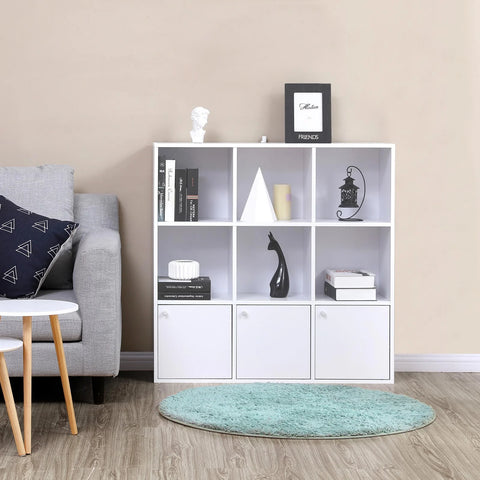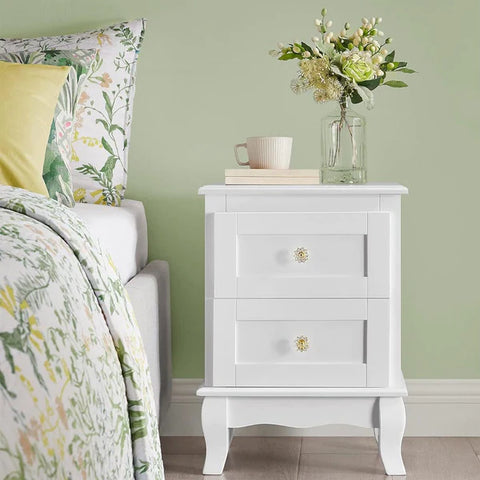Home is not only a place where we spend most of our time, but also a space where we can express our own individuality and taste. Interior design plays a key role in the atmosphere our home exudes and how it affects our daily mood and well-being. A well-designed interior is not only aesthetically appealing, but also contributes to increasing comfort and functionality, which are essential for the quality of everyday life.
Understanding different interior design styles can help you find the environment that best reflects your personality and lifestyle. Whether it's modern, minimalist, country, bohemian, classic, or avant-garde, each style has its own charm and unique characteristics that can make your home special. Below, we'll take a closer look at some popular interior design styles to help you find the style that best suits you.
1. Scandinavian style
History and origin
Scandinavian style has its roots in the mid-20th century, in the cool and often dark climate of Scandinavia. This design trend emphasizes naturalness, functionality and simplicity. The foundations of the style were shaped by the influences of modernism and the Bauhaus school, emphasizing closeness to nature and human-centered design.
Features
The main characteristics of the Scandinavian style include clean lines, natural materials such as wood and wool, and a light color palette that reflects the natural elements and the desire for light. This style emphasizes warmth and comfort in addition to simplicity and minimalism, creating a harmonious and relaxing home environment.
Tips for creating a Scandinavian style
- Use light, natural colors like white, beige, light blue and green.
- Choose furniture with simple, clean shapes that are functional and comfortable.
- Integrate natural materials like wood, glass, or wool in furniture and decor.
- Use natural light and open spaces to enhance the spacious feel.
- Decorate your home with minimal decorative elements, such as understated graphics or textiles.
2. Modern minimalism
The philosophy of minimalism
Modern minimalism is based on the principle of "less is more". It was born in the mid-20th century and emerged as a reaction against excessive consumption. This philosophy aims to create cleanliness, order and tranquility by focusing on only the most essential elements, thus creating a clean and tidy living space.
Features
Modern minimalism is characterized by minimalist furniture, neutral colors, and a minimum of decorative elements. The emphasis is on the functionality and cleanliness of the spaces, removing all unnecessary elements that could disturb the harmony and purity of the space. This style creates a perfect balance between practicality and aesthetics.
How do we integrate minimalism into everyday home life?
- Choose furniture with simple, clean shapes and functionality.
- Keep the color palette neutral and soothing; use gray, white, and beige.
- Avoid excessive embellishments; instead choose quality pieces that are decorative in their own right.
- Remove all unnecessary items that are not necessary for daily life.
- Organize your storage systems to hide everyday items, keeping your spaces clean and tidy.

3. Rustic style
Characteristics and roots of the rustic style
The rustic style evokes the atmosphere of nature and rural life, with its roots in traditional country houses and natural surroundings. This style emphasizes natural materials and their craftsmanship, creating a warm, homely and timeless atmosphere.
Materials and textures
The rustic style is based on wood, stone and natural fabrics like leather and linen. The emphasis is on rough, natural textures and a handmade look that help to highlight the character and uniqueness of the space.
Ideas for creating a rustic atmosphere
- Use strong, rough-surfaced wooden furniture and decorative elements.
- Integrate stone surfaces, such as fireplace surrounds or stone walls.
- Choose natural fabrics like leather, wool, or linen for textiles.
- Decorate your home with handcrafted items and antique decor to enhance the historic feel.
- Create a warm and welcoming atmosphere with natural colors and warm lights.
4. Bohemian elegance
Characteristics of the bohemian style
Bohemian style emphasizes freedom, creativity, and individual expression. It is colorful, flirty, and often irregular, drawing inspiration from travel, cultural encounters, and artistic movements.
Decorative elements
Bohemian decor is dominated by colorful fabrics, unique patterns, and handcrafted objects. The emphasis is on the combination of textures and colors, as well as unique, personal objects that create a unique and expressive space.
Tips for applying bohemian style at home
- Feel free to use colorful fabrics, such as Moroccan patterned pillows and Turkish kilim rugs .
- Surround yourself with different patterns and textures from wall hangings to decorative pillows.
- Create a loose, free-spirited layout where furniture and objects are arranged spontaneously.
- Incorporate crafts and artwork to further enrich the character of the space.
- Don't be afraid to combine unusual objects and vintage pieces to create a unique and cozy atmosphere.
5. Industrial style
The importance and origin of industrial style
The industrial style emerged in the early 20th century, primarily in old factories and warehouses, where original architectural elements and materials were used. This style emphasizes a raw, honest look, showcasing the basic structures of buildings and the materials of the industrial age.
Features
The industrial style is dominated by raw brick, wood, metal, and brown and black colors. Spaces are often open and airy, emphasizing raw structures such as exposed pipes and ducts. The decor is minimalist, emphasizing functionality and the honesty of materials.
A guide to creating an industrial style
- Use exposed brick walls or brick-effect wallpaper to create texture and character.
- Integrate exposed metal pipes and steel structures as part of the design.
- Choose large, open-plan furniture that fits well in spacious industrial spaces.
- Use brown, black and gray colors to emphasize the industrial feel.
- Decorate with minimal decorative elements, such as metal lamps and artwork.

6. Vintage romance
The importance and origin of vintage style
Vintage style refers to the reuse and reinterpretation of furniture, textiles, and decorative elements from past centuries, especially evoking the atmosphere of the turn of the 19th and 20th centuries. This style is based on a combination of nostalgia and elegance, emphasizing the beauty and charm of old times.
Features
Vintage style is characterized by antiques, pastel colors, and elegant textures. We often find delicate carvings, ornate mirrors, and classic patterns that create a romantic and intimate atmosphere.
A guide to creating a vintage feel
- Choose antique or antique-effect furniture that will give the space an elegant and historic feel.
- Use pastel colors like pale pink, lavender, or cream for a delicate and elegant look.
- Decorate with delicate textures like lace, velvet, and finely woven textiles.
- Place old objects like old photographs, porcelain figurines, or old books on the shelves.
- Use delicate, ornate lighting fixtures like chandeliers or vintage table lamps to enhance the romantic atmosphere.

The home environment has a profound impact on human well-being, as it is not just a physical place, but also a space where our personal taste, style and creativity can be expressed. A well-designed, harmonious home contributes to our spiritual balance and enhances our quality of life. The interior design styles presented here – be it Scandinavian, modern minimalism, rustic, bohemian, industrial or vintage – are just a few examples of how we can create a personalized and comfortable home.
Every home is unique, and the ideal environment is different for everyone. The key is to create a space that reflects your personality and where you enjoy spending time.
The important thing is to dare to renovate and personalize your home, creating a truly special and cozy place. Remember, of course, you can freely combine styles.














